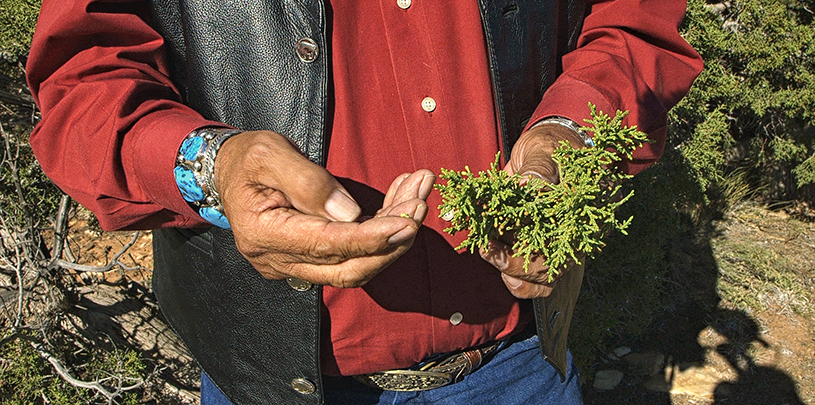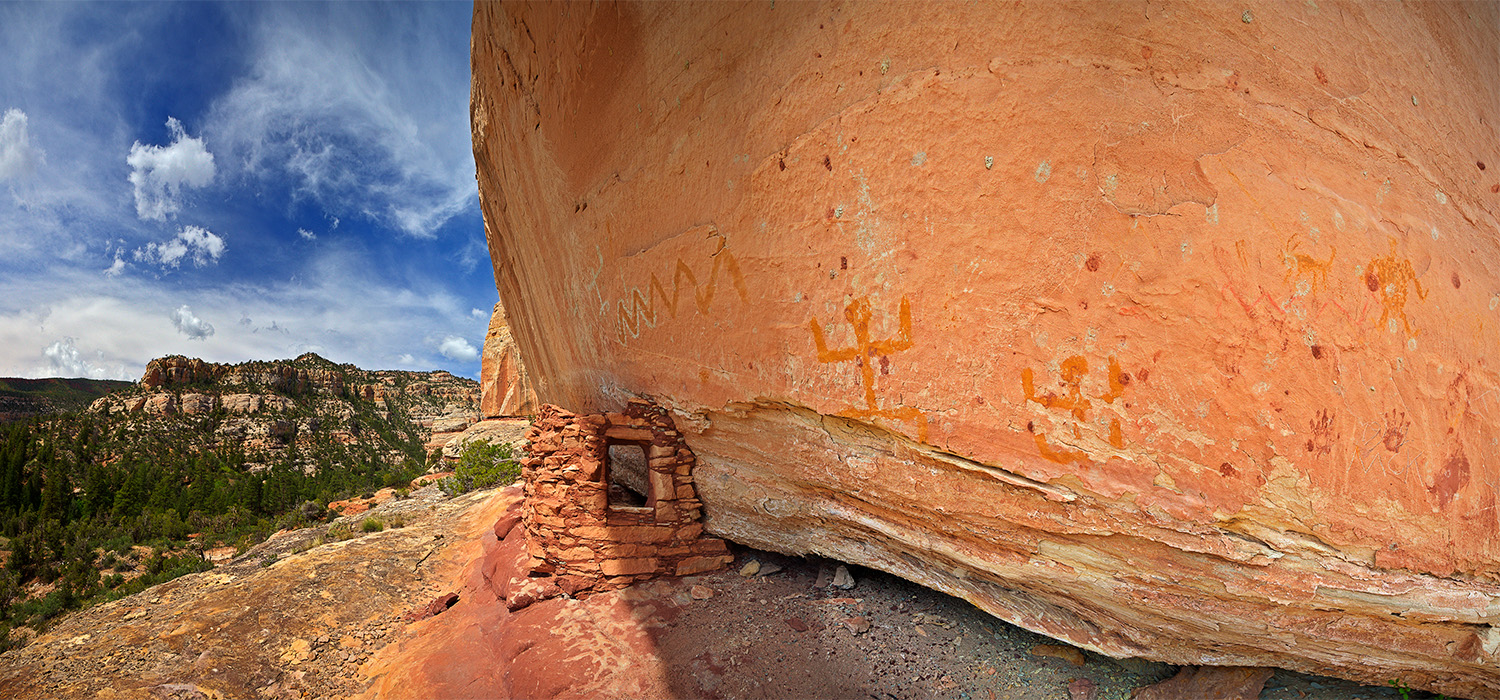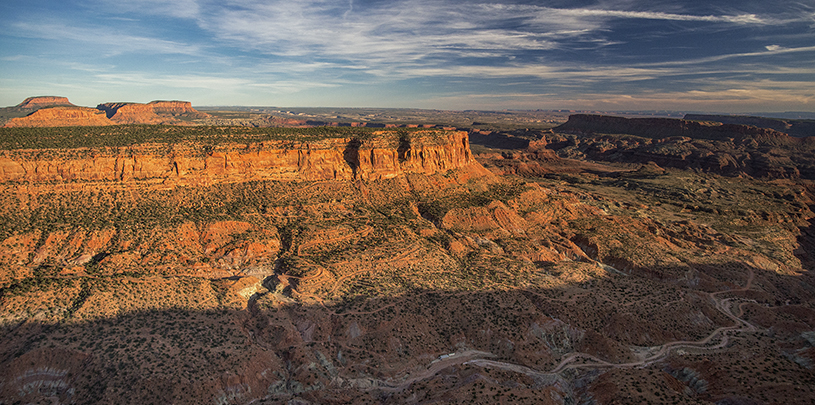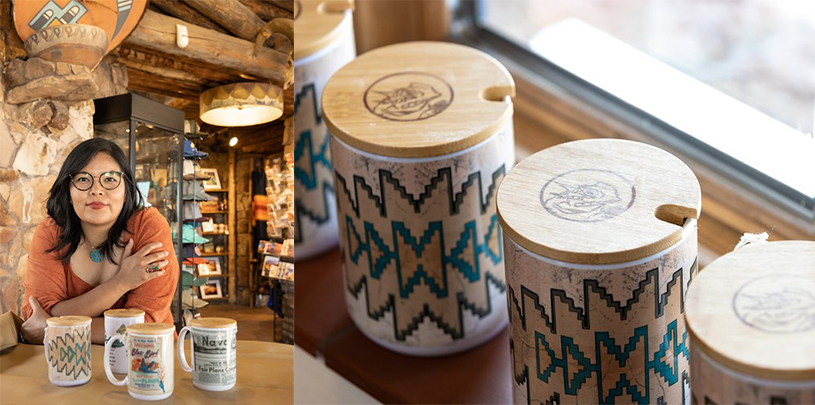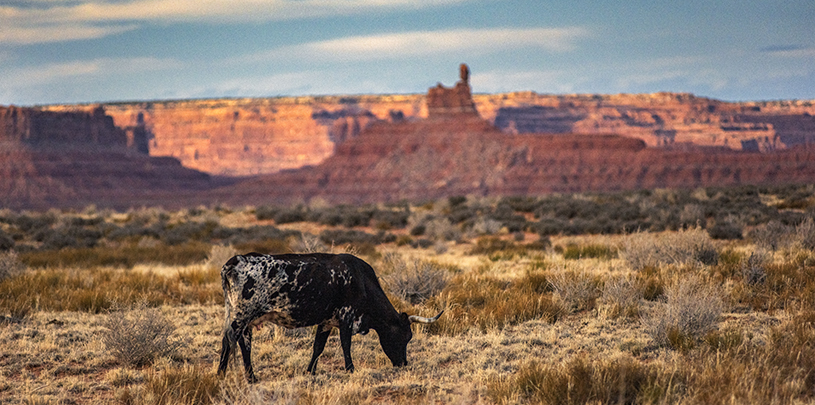 by Talia Boyd, Cultural Landscapes Manager
by Talia Boyd, Cultural Landscapes Manager
This blog is distilled from the Native Perspectives virtual series held in partnership with Grand Staircase Escalante Partners in 2020. Hear from Native experts on a range of issues related to public lands and tribal preservation. Explore the recordings ›
Knowing the locations of suitable agricultural soils, the wisdom gained by healers, the use of medicinal plants to treat illness — these are all forms of traditional knowledge systems that we, as Indigenous people, have passed down through generations of living with the natural world. It’s ingrained through oral histories and blood memory. It’s learned, experienced, and felt. It consists of listening, and sharing. It’s complex and nuanced.
Below, three Native experts weigh in on what Native knowledge is and how it can be implemented in land-use practices and land management.
What is traditional knowledge?
To talk about traditional knowledge, Jim Enote, a Zuni tribal member and CEO of the Colorado Plateau Foundation, says, you first need to acknowledge that we live in a world with many ways of knowing. Science is one discipline of knowledge, but there are others. He discerns traditional knowledge is acquired when a person or group is “intensely and profoundly planted in the same social and environmental conditions for a very long time.”
For Native peoples on the Colorado Plateau, that can easily be 1,000 years or more.
Language serves as vessels of the traditional knowledge, while ceremony preserves the patterns, the associations, and trust in that traditional knowledge.
— Jim Enote
But it’s important not to over simplify. Traditional knowledge is complex, and nuanced. It involves a lot of different perspectives, even within a single tribe. And it can be specific to an individual person.
“We’re not just one group of people, even though you may see on the map that it says Hopi. That’s a political boundary for us. You get to the finer details of who we are, and you come to realize that there are currently 30-plus clans that still exist within Hopi culture society. But you take that to 100 or 200 years ago — there was maybe double or even triple that amount of knowledge that was existing and shared,” explains Lyle Balenquah, a Hopi archaeologist, ethnographer, and educator who has worked in the Southwest for 20 years.
Janene Yazzie, a community organizer and Indigenous and human rights advocate, says the biggest challenge is how normalized one particular way of knowing and one value system has become.
“This is the result of generations of colonization,” she says. “Colonization wasn’t just a theft of lands and resources. It was also the disruption of other ways of knowing — the elimination, the demonization of other ways of knowing.”
Incorporating traditional knowledge into land management

Western science has long been the dominant framework of this country and an encroaching one for Indigenous peoples. When talking about including traditional knowledge into policies and government, there has been pushback. Some say it’s not science. To others, it is anecdotal. But it’s not foreign everywhere. Enote cites the code talkers from many different tribal nations who served in World War I and World War II as a strategic use of traditional knowledge.
“We should be employing the widest scope of imagination and knowledges to solve the complex problems facing our world,” says Enote.
Translating traditional knowledge into federal policy, though, is challenging. There are some laws, like the National Historic Preservation Act, National Environmental Policy Act, and the Archaeological Resources Protection Act that provide ways for Indigenous communities to interact with federal management policies. But they can pigeonhole Indigenous knowledge, says Balenquah. “We’re always struggling with how we address our cultural concerns for this landscape within this little framework we’re given.”
These laws mandate consultation with tribes, but consultation can play out more like a box to check.
Enote emphasizes,“Consultation is not the same thing as collaboration.”
There is no way that Indigenous knowledge systems can fit into a neat little box and look pretty for policy. It doesn’t work like that.
“I call on our friends in government, the land managers, to find ways for more inclusivity, more diversity. To see how we can make these conversations more real and deep and enriching,” says Enote.
Looking forward
From buffalo herd restorations in the Northern plains, to the caribou and reindeer herders of the Arctic, to wild rice farmers protecting vital wetlands in the Great Lakes region, to the forest restoration that is happening across the Amazon basin, Indigenous peoples all over the world are carrying forth their traditional knowledges.
“It is phenomenal that, despite all of the challenges — the genocide, the assimilative policies, the years of colonial empire and rule, the homogeny…Indigenous peoples all around the globe are still carrying on these practices,” says Yazzie.
Enote sees opportunities for federal agencies to foster strong learning environments.
“We’ve seen continuously changing methodology in silviculture, range management, archaeology, wildlife management. Why not bring traditional knowledge off the bench?”
Yazzie leaves us with this piece of advice:
This is where we need our allies to step up to the plate, to recognize within their own practices and within their own conservation work the rights of Indigenous peoples — the knowledge systems of Indigenous peoples. And not in a way where they speak for us, but where they bring our knowledge holders to the table to help lead these solutions and these discussions.
— Janene Yazzie
Meet the panelists:




